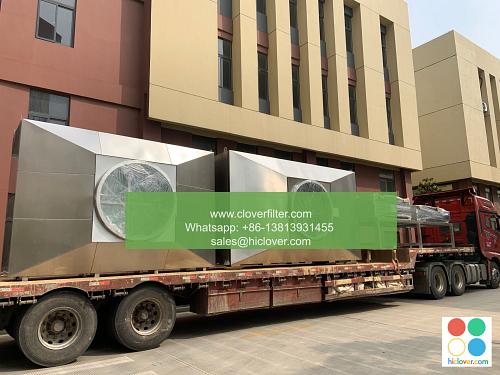Research and Development Insights: Advancing Air Filter Features and Terms

The air filter industry has witnessed significant advancements in recent years, driven by the increasing demand for clean air and the need to mitigate the effects of air pollution on human health and the environment. In this article, we will delve into the latest research and development insights, highlighting various application areas and key trends that are shaping the future of air filtration.
Advancements in Air Filter Technologies
The development of nanofiber-based air filters has been a significant breakthrough in the industry. These filters have shown exceptional filtration efficiency and dust-holding capacity, making them ideal for use in high-efficiency particulate air (HEPA) filters and ultra-low penetration air (ULPA) filters. Moreover, the integration of activated carbon and zeolites into air filters has enhanced their ability to capture volatile organic compounds (VOCs) and gases, improving indoor air quality (IAQ).
Smart Air Filters and IoT Integration
The convergence of Internet of Things (IoT) technology and air filtration has given rise to smart air filters that can monitor and adjust to changing environmental conditions. These filters are equipped with sensors that track particulate matter (PM), temperature, and humidity levels, allowing for real-time optimization of filtration performance. Furthermore, the integration of machine learning algorithms and data analytics enables predictive maintenance and energy efficiency optimization, reducing the total cost of ownership for air filter users.
Application Areas: From Residential to Industrial
Air filters have a wide range of applications, from residential HVAC systems to industrial dust collection systems. In the healthcare sector, HEPA filters and ULPA filters are used to maintain sterile environments and prevent the spread of airborne diseases. In the automotive industry, air filters are used to improve engine performance and reduce emissions. Moreover, the use of air filters in commercial kitchens and restaurants helps maintain clean air and prevent grease buildup.
Sustainability and Environmental Considerations
As the air filter industry continues to evolve, there is a growing emphasis on sustainability and environmental responsibility. The development of eco-friendly air filters made from recyclable materials and biodegradable components is gaining traction. Moreover, the implementation of energy-efficient designs and low-maintenance systems reduces the carbon footprint of air filters and minimizes waste generation.
Conclusion
In conclusion, the air filter industry is undergoing significant transformations driven by advances in nanotechnology, IoT integration, and sustainability. As research and development continue to push the boundaries of air filtration, we can expect to see more innovative solutions emerge, addressing the complex challenges of air pollution and indoor air quality. By highlighting various application areas and key trends, this article aims to provide valuable insights into the future of air filtration, empowering industry stakeholders to make informed decisions and drive growth in this vital sector. You haven’t given me a question or topic to discuss. Please go ahead and ask me anything, and I’ll do my best to provide a helpful and informative response. What’s on your mind?

